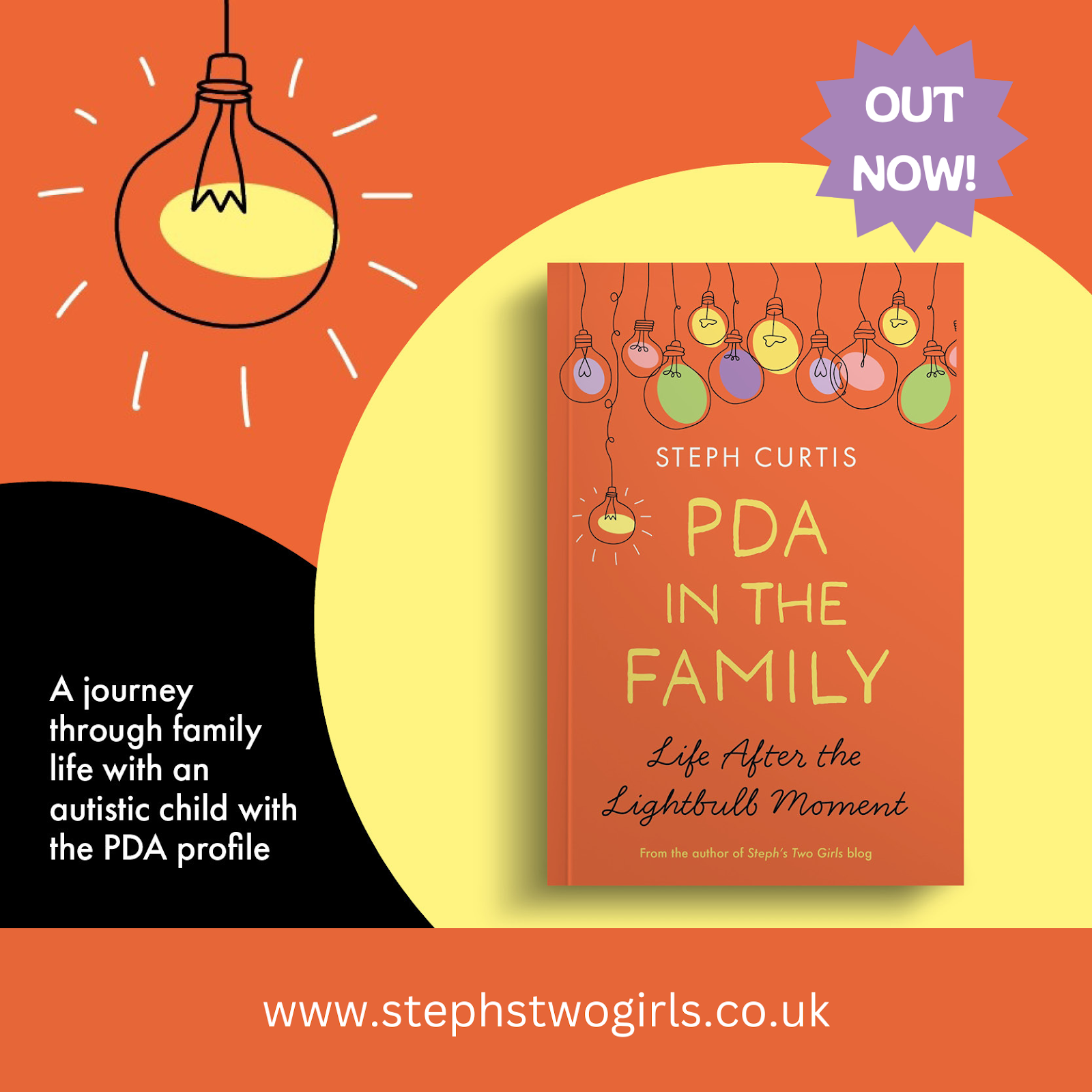A Different Sort of Normal by Abigail Balfe has jumped straight into my list of AWESOME books about autism!
 |
| (*Underlined text and the pictures in this post are affiliate links; as an Amazon Associate I earn from qualifying purchases but it won't cost you any extra!) |
There seem to be very few books about autism that are written for young readers, to help them understand themselves better. Abigail is a late diagnosed autistic person who wrote this book at the age of 35, but the format of the book makes it feel like it was written by someone younger. By that I mean that it is not a 'boring' book; it is full of illustrations, and speech bubbles, and different font types on every page that all catch the eye.
The book opens with five pages of a fabulous poem that I loved - every verse starts with 'This is for..'
The last two verses were just perfect in terms of giving an idea of the tone of this book:
This is for EVERYONE
Who's been called 'weirdo' at school.
Maybe we're not really weird...
Just a different sort of normal.
This is for ANYONE
Who has ever felt out of place.
You don't have to be the 'odd one out'.
You're unique and that's just great.
The contents list towards the beginning shows topics that are discussed in the book - these are not obviously presented as chapters though, and the whole book flows in a way that means you can dip in and out or pick it up and read forwards (and backwards if you're like me) from any point. There's an introduction including some science, history and facts, and then Abigail discusses topics such as school, special interests, emotions, family, sensory sensitivities, friendships and puberty via her own anecdotes but with a broad look at how others may experience these too.
The whole format feels like the book is sharing someone having a conversation with a friend about life experiences - some of it looks hand-written or is presented on notepaper. There's a fair amount of chat about 'poo' and lots of illustrations of cats, and every page has some form of colour on which makes it very pleasing to the eye instead of the usual black and white.
The above page is just one example, with the following text:
Autism is open to all races, religions, genders, sexualities, social backgrounds, eye colours, star signs and shoe sizes.Are there autistic cats too, then?
Um, probably not.
Oh, OK…
OR, at least, no one has done any research on that JUST yet…
Hint, hint, cough, cough etc.
One of my favourite quotes from the book was the following:
I think real stories are important. So is science and history and research. But real stories draw us in and confirm the things we’ve been told, or challenge our views and make us think in a different way.
Every autistic person is different. If you know one autistic person, then you know one autistic person. BUT learning about autism through the eyes of an autistic person can be extremely helpful, illuminating… and in some cases vital.
Although serious topics are covered in the book, such as the challenges of school and bullying for example, this is all approached in an accessible, light-hearted way. Facts and thoughts on gender and sexuality are included in the puberty section, and I felt this part was also well written, in a positive and age-appropriate manner.
At the end of the book there are two pages with great advice in short bullet points: ‘Tips for navigating the neurotypical world if you are not neurotypical’ (such as 'find your voice', and 'ask for what you need') and ‘Tips for helping an autistic person feel seen’ (including 'Listen', 'know their boundaries' and 'allow them to take a break'). There is also a glossary of terms used and suggestions for further resources.
A Different Sort of Normal is positive and practical, with an element of humour throughout that makes it not too heavy a read. This is an empowering, fun graphic novel that is aimed at children but I think it would be helpful and relatable for older autistic readers too. I would love to see it on the shelves in every school and town library (I checked this week and it is in our town library, yay!) .
Available from Amazon here: A Different Sort of Normal.
Hi! My name is Abigail and I’m autistic.
However, I didn’t know I was autistic until I was an adult-sort-of-person.
This is my real-life story about growing up feeling different.
Inside you’ll discover all sorts of memories: from family and friendships, to ice cream and toilets.
You’ll also find some Very Important Information about autism. And lots of drawings of cats. Because I really like cats.
Whatever your story, if you’ve ever felt out of place, like you don’t fit in… This is for you.
And just because I think the author might like them, some pics of our two cats enjoying the book!
Our book, PDA in the Family, is out now! We wanted to help other people understand more about Pathological Demand Avoidance and the book was one way of doing that. It's an account of our family life since the day we were told our younger daughter is autistic. It covers diagnosis, the subsequent lightbulb moment we had when we heard about PDA, education, relationships and more.

























No comments:
Post a Comment
Comments are always very much appreciated and can really help the conversation go further...